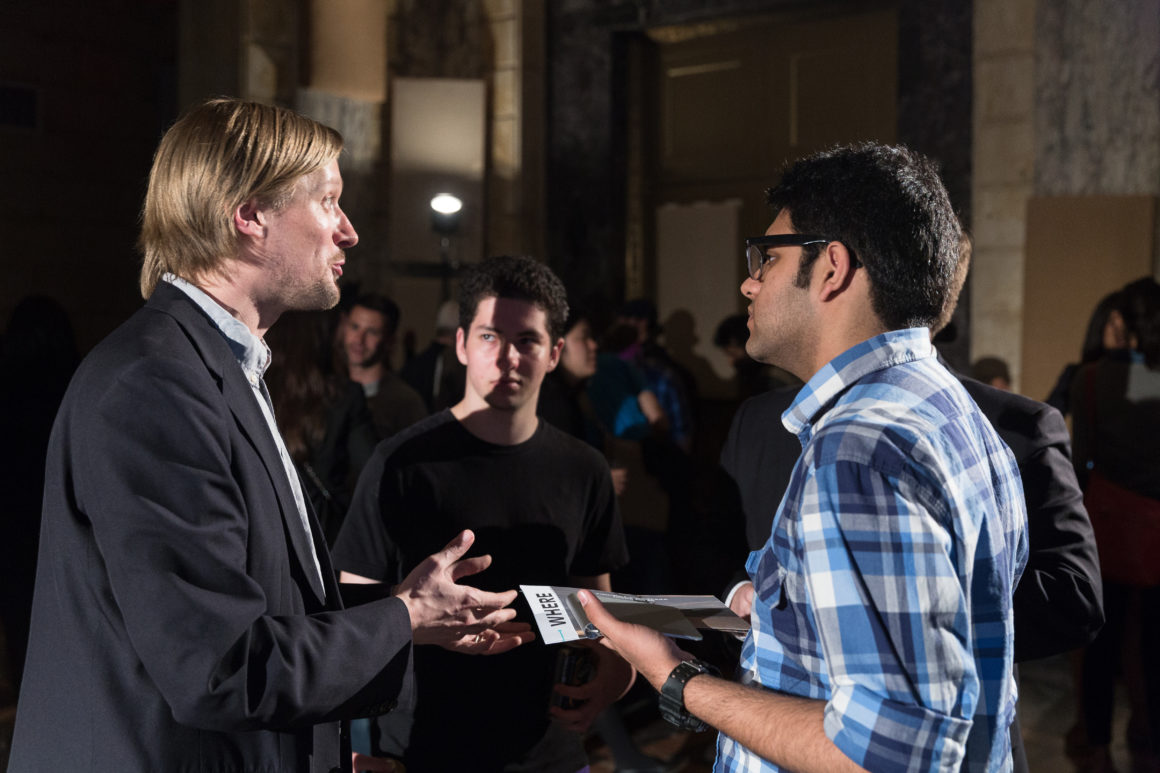ABOUT
What grabbed our attention in the congested city?
The latest research in neuroscience is revealing fascinating things about human perception and the relationship between what we see and what we experience. And with inexpensive but high-powered tools such as electroencephalography-based (EEG) brain-computer interfaces (BCI) now increasingly accessible, it’s getting easier to tap into the signals underlying attention, stress, and our processing of the world.
Van Alen Institute and Columbia University GSAPP Cloud Lab held an interactive tech demo of BCI research projects, followed by a dialogue among designers, technologists, biomedical engineers, neuroscientists, and environmental psychologists exploring what brain data tells us about our experience of the city. Can new technologies deepen our understanding of how people relate to place and improve how we design cities?
In advance of the event, we hosted a research workshop with Cloud Lab on Sunday, April 27 using mobile EEG technology to record the brain’s response as we explored Brooklyn’s DUMBO neighborhood. This brainwave data was aggregated into a spectacular visualization produced by Cloud Lab and presented on May 13. Other project demonstrations included OpenBCI, a low-cost, programmable, open-source EEG platform, and MindRider, a bike helmet with an EEG sensor that maps and displays users’ mental states. Drinks were served after the conversation.
Conversation participants: Mark Collins, Director, Cloud Lab, Columbia University’s GSAPP; Josue Diaz, Designer, MindRider;Arlene Ducao, Chief, MindRider; Toru Hasegawa, Director, Cloud Lab; Dave Jangraw, Neuroscientist and Biomedical Engineer, Columbia University; Joel Murphy, Co-Founder & President, OpenBCI; Conor Russomanno, Co-Founder & CEO, OpenBCI; Nancy Wells, Associate Professor at the Department of Design and Environmental Analysis, College of Human Ecology, Cornell University.



























